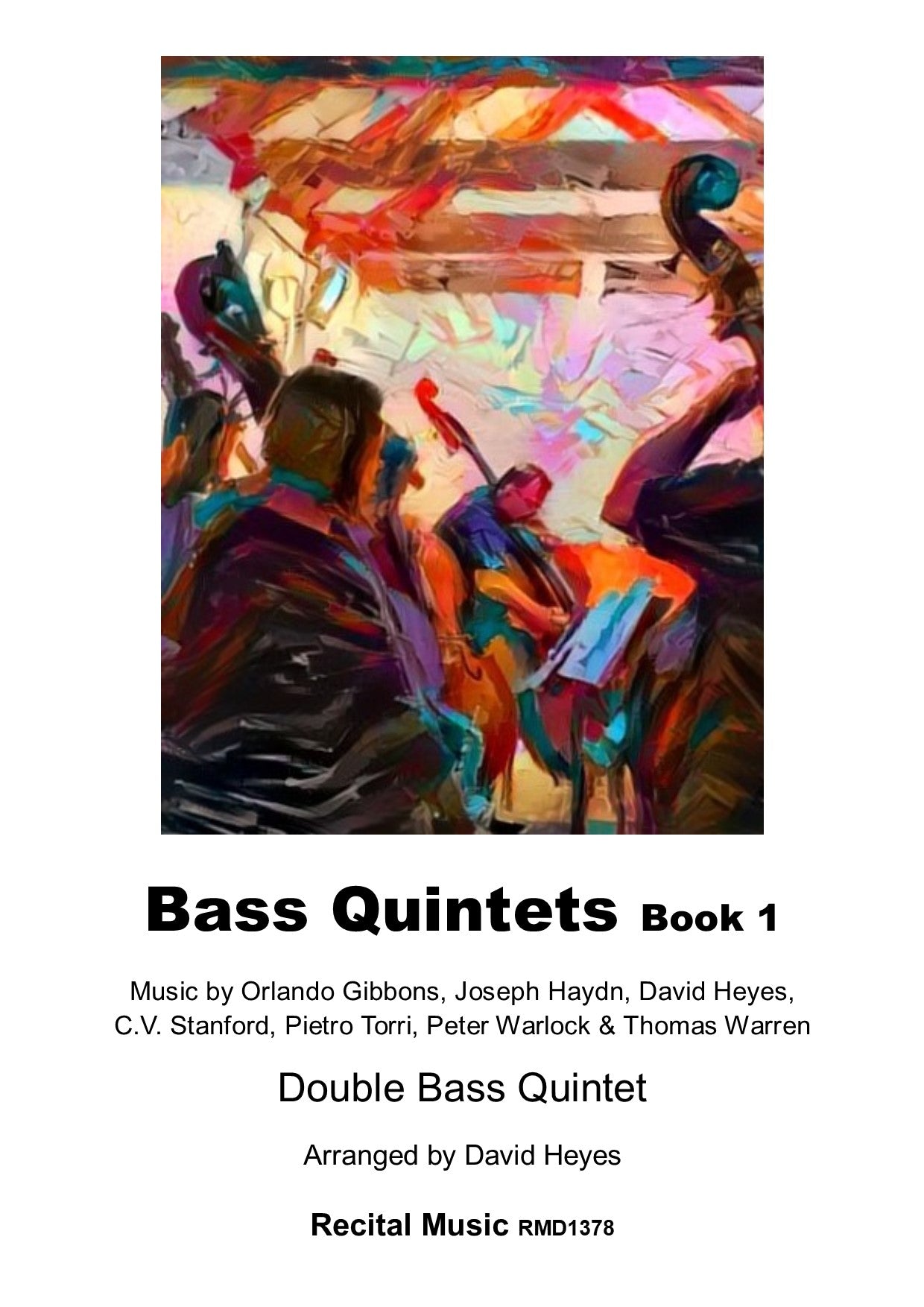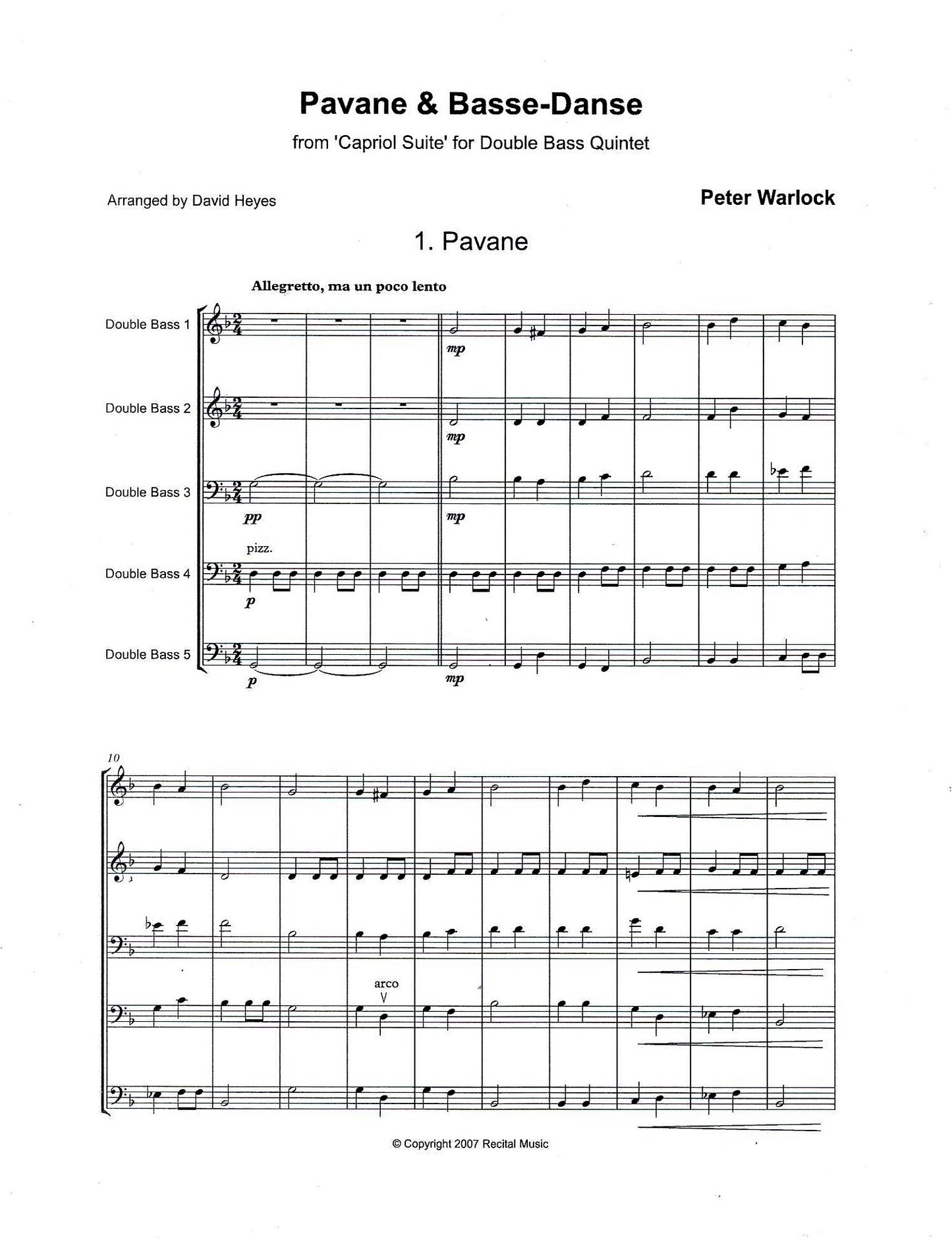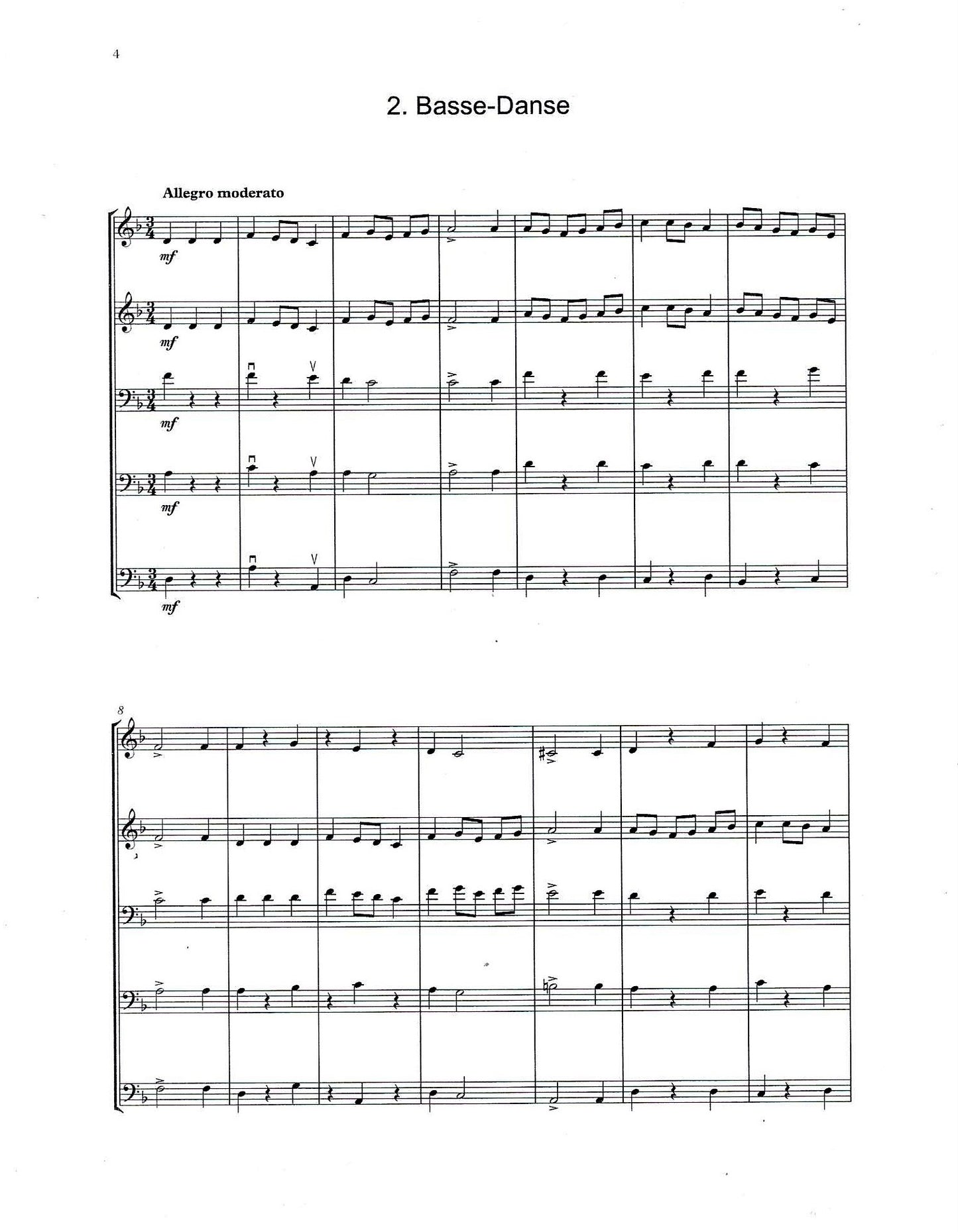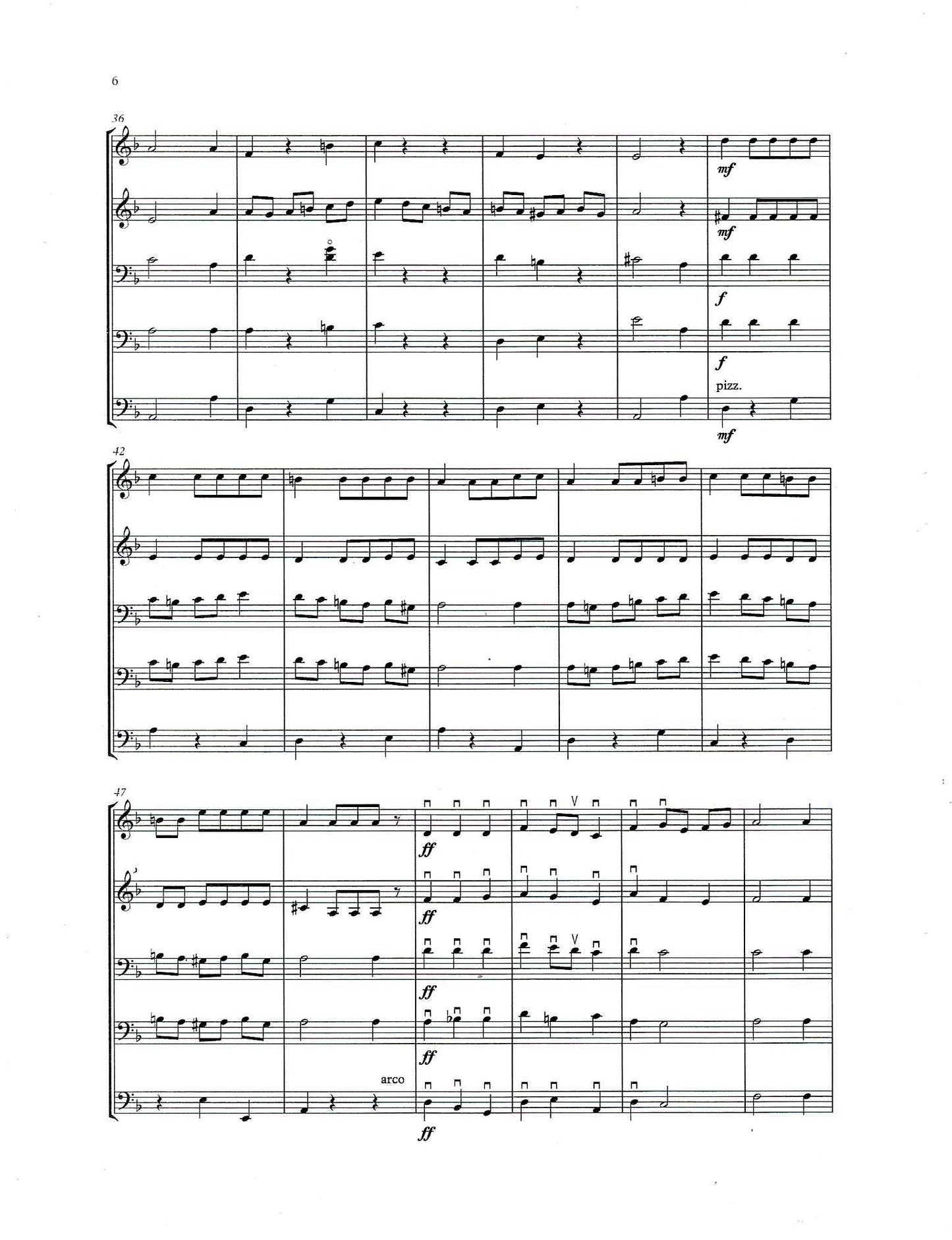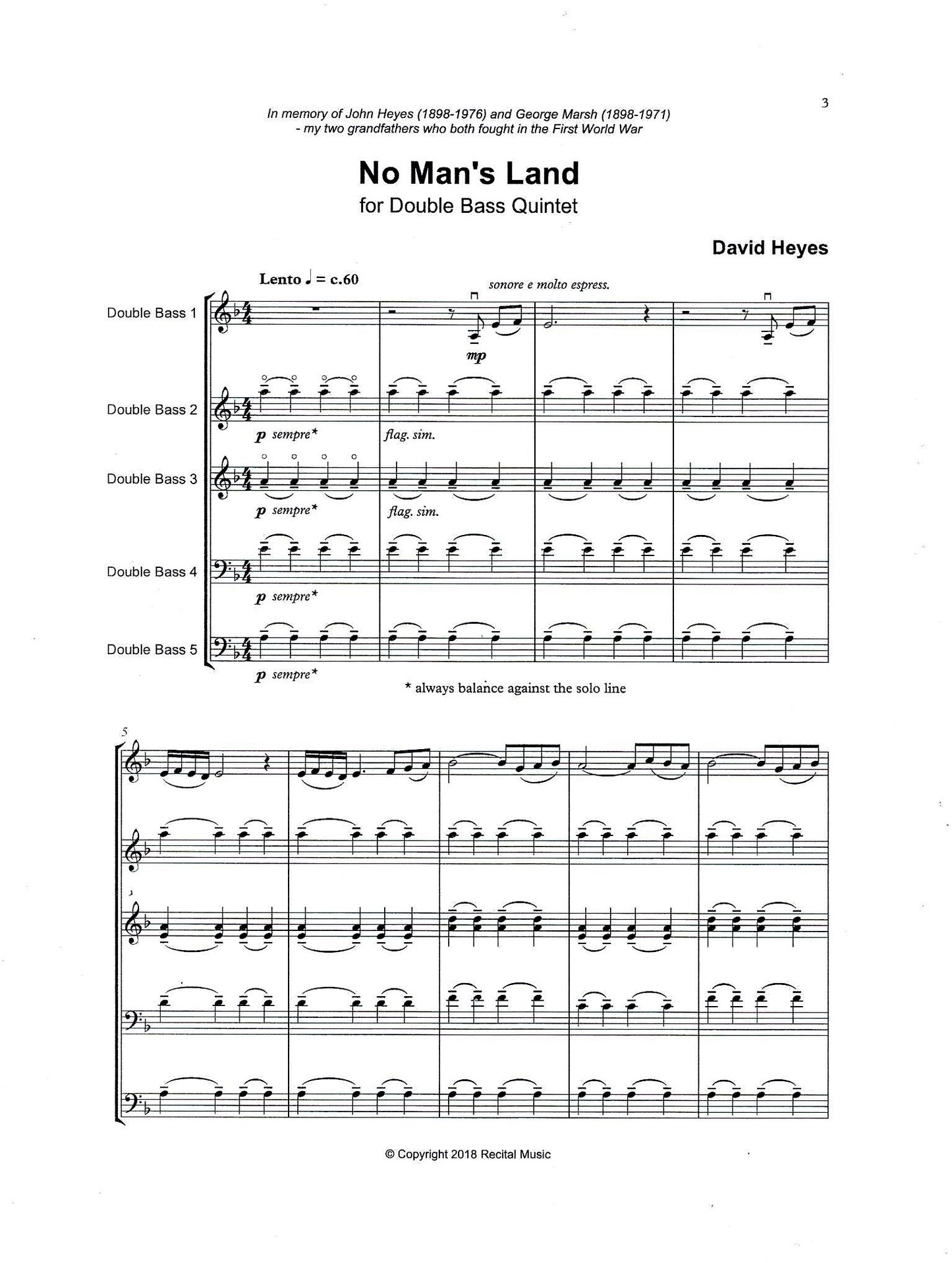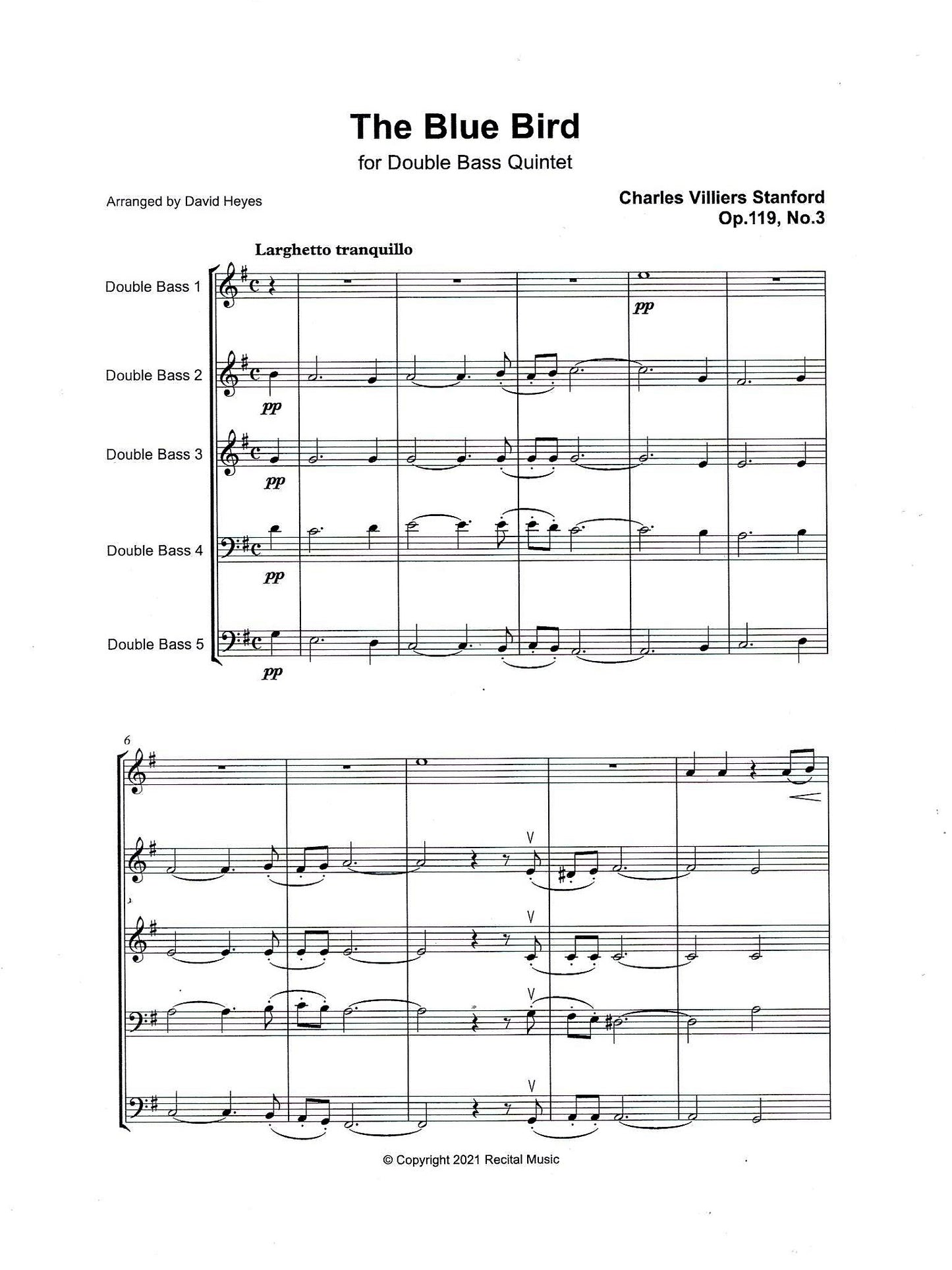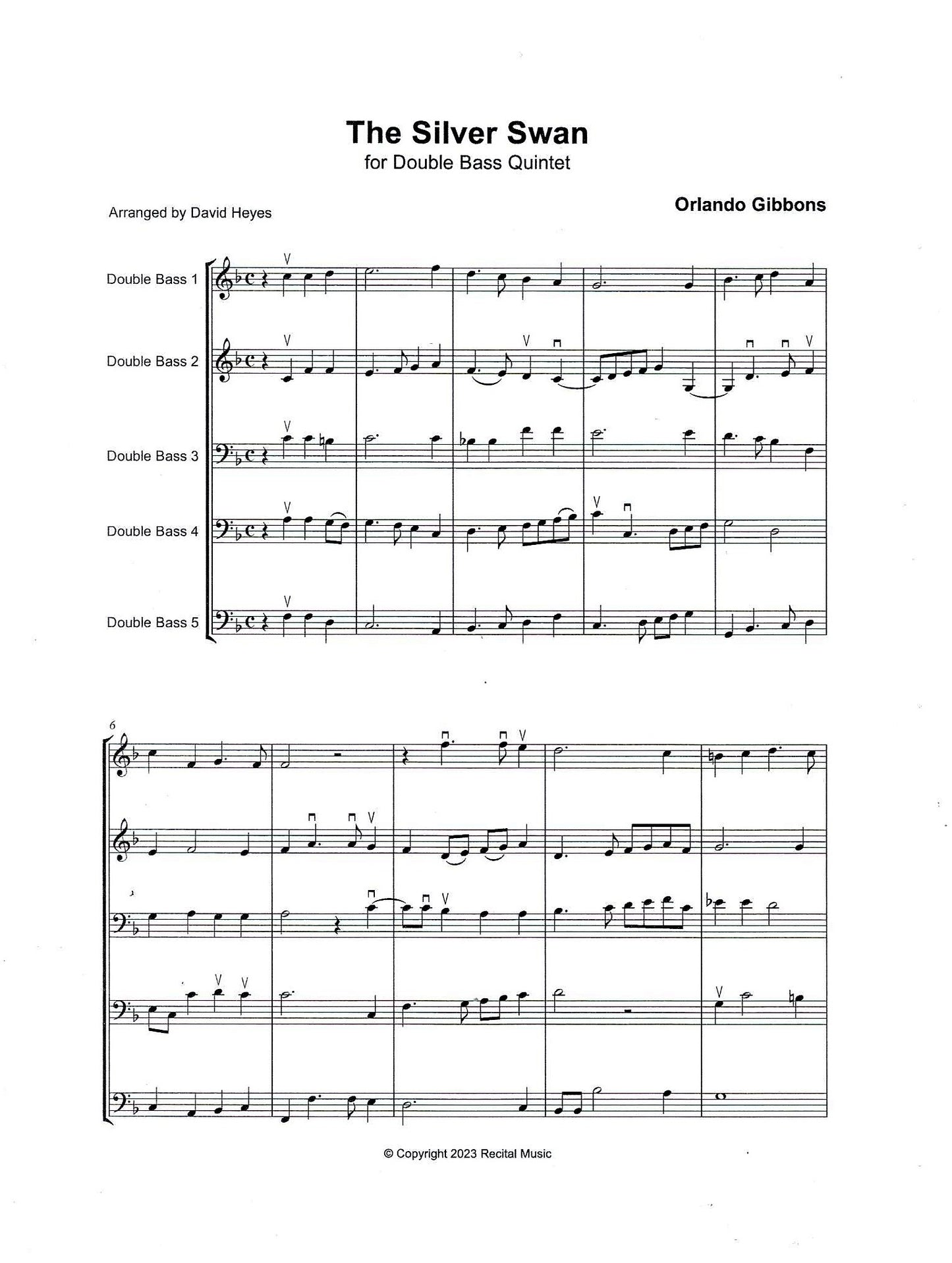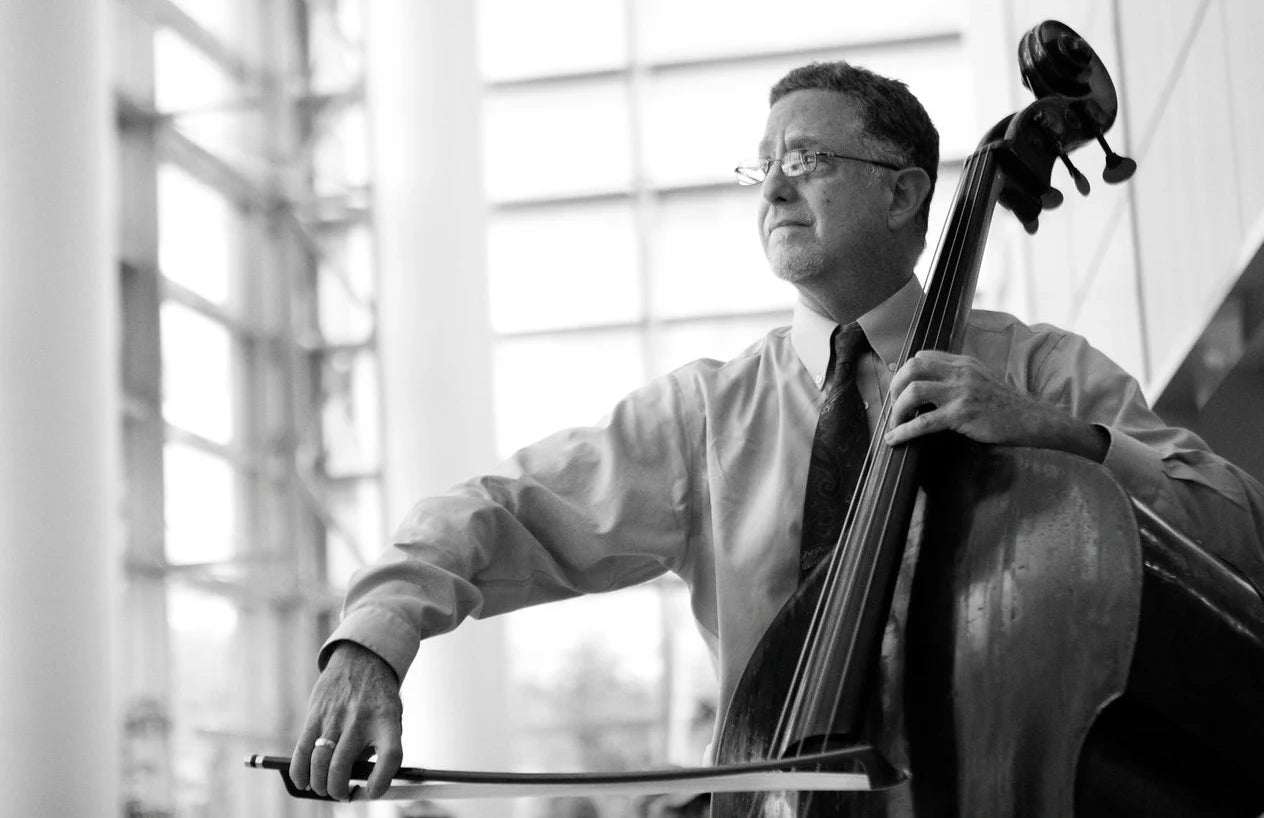David Heyes
Bass Quintets Book 1 for double bass quintet (arr. David Heyes)
Bass Quintets Book 1 for double bass quintet (arr. David Heyes)
Couldn't load pickup availability
About the Quintets
Bass Quintets Book 1 is a collection of ten exciting and accessible transcriptions from the 16th-21st century that lend themselves beautifully to the bass quintet medium.
There are a few musical and technical challenges, alongside opportunities to play wonderfully inspiring music in concert or at home with friends. Bowings and dynamics can easily be adapted or amended to add further variety and interest to each.
The editions include a score and five solo parts.
Orlando Gibbons - The Silver Swan
The Silver Swan is the most famous madrigal by Orlando Gibbons (1583-1625) and was first published in 1612 in his First Set of Madrigals and Motets of 5 Parts. There are five interweaving solo lines, with the melody in the top part, and the contrapuntal and harmonic work makes this a particularly effective transcription for double bass quintet. Although there are no dynamics, the musical phrasing and flow will help to create a strong narrative which emphasises the sonorous and cantabile qualities of the double bass ensemble.
David Heyes - No Man’s Land
'No Man's Land' for double bass and piano was composed in June 2014 to commemorate the centenary of the start of the First World War and in memory of David's grandfathers, both of whom fought in the conflict. The simple chordal accompaniment is reminiscent of a repeated tolling bell against which the solo line plays a poignant melodic line of yearning loss. A hint of gunfire eventually falls away into a repeated two note pattern which gradually fades away into nothingness. The melodic interest in shared between the players against a simple and static chordal accompaniment.
C.V. Stanford - The Blue Bird
The Blue Bird by Charles Villiers Stanford (1852-1924) was composed in 1910 and depicts a bluebird in flight over a lake. Originally for a five-part unaccompanied choir, the soprano is intended to portray the bluebird, and the wide vocal range of the soprano line has been described as illustrating “the bird’s free flight across the lake”. The choral writing is generally chordal and slow-moving, transcribing beautifully for double bass quintet and emphasizing the sonorous and lyrical qualities of the double bass.
Peter Warlock - Pavane & Bass-Danse
Pavane & Basse-Danse are two movements from Capriol Suite by Peter Warlock (1894-1930), originally for string orchestra and composed in 1926. They transcribe well for double bass quintet, and the inventive and evocative dance music is suited to the good intermediate ensemble. Basses 1 and 2 play in the thumb position, and the others remain in the bass clef throughout.
Pavane is lyrical and elegant, contrasting a lively, vibrant, and energetic Basse-Danse, and who better to play 'Basse Danse' than the bassists?
Canons & Rounds
Five vocal canons and rounds by three composers offer effective concert and study material in the lower register of the double bass. A range of dynamics and articulations can be added to create interest and contrast. The works by Thomas Warren (c.1730-1794) and Pietro Torri (c.1650-1737) are taken from ‘A Collection of Catches, Canons, and Glees for Three, Four, Five, Six and Nine Voices’, which include 650 works by more than 100 composers, and the collection was published in volumes between 1762-1793.
